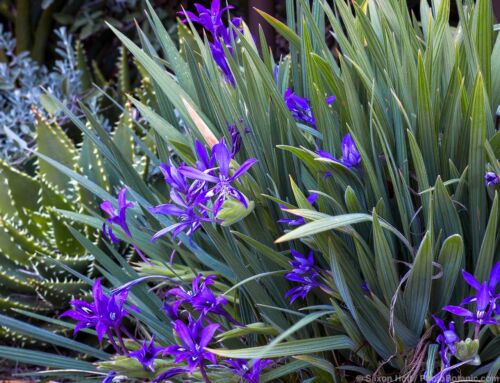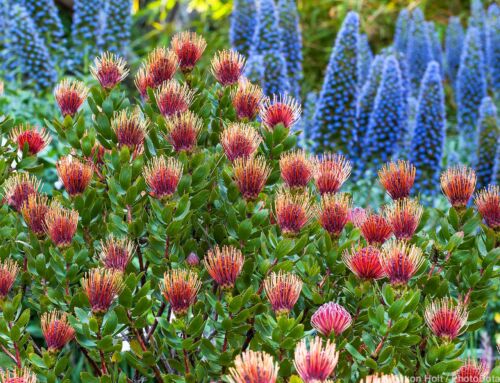If you’re looking for a plant that provides masses of spring flowers, stays green year round, takes little to no summer water, and thrives on benign neglect, it’s hard to beat California’s wild lilacs (Ceanothus).
There are so many kinds of ceanothus that it takes a little research and some trial-and-error to find one that will do well in your garden. Fortunately, most grow quite fast, so an initial failure is not irreparable.
Some ceanothus are wide-spreading ground-huggers. Others are medium-height mounds. Still others are tall, upright shrubs that can be gently trained as small trees.
Some ceanothus perform best inland, while others require cool, foggy summers to do well. All pretty much demand excellent drainage and infrequent to no summer water.
Showy clusters of tiny flowers are pale to brilliant blue, white, lavender, or occasionally pinkish rose. Deer regularly munch all ceanothus except those with the smallest, toughest, or most prickly leaves and will test all kinds when newly planted.
Ceanothus ‘Yankee Point’ is a fast-spreading groundcover, about 3 feet tall and 10 feet wide, with large, dark green leaves and dark blue flowers. It does best near the coast.
‘Carmel Creeper’ is somewhat lower and wider spreading with glossy green leaves and light blue flowers. Away from the coast it requires some summer water and may be short-lived.
‘Ray Hartman’ is a vigorous shrub to small tree that grows quickly to 15 feet tall and wide. Leaves are large and medium green, and masses of sky blue to grayish blue flowers open from pinkish buds. This one grows well in both interior and coastal gardens.
‘Concha’ is an adaptable shrub, dense and mounding 6 to 8 feet tall, with masses of cobalt blue flowers in late winter to spring. It succeeds in coastal or inland gardens with good drainage and little to no summer water.
Maritime ceanothus (Ceanothus maritimus) has olive-green leaves and pale blue flowers in late winter or very early spring. It is low growing, stiffly branching, and slightly mounding, somewhat like a cotoneaster. This ceanothus is best along the coast but does well in inland gardens with part shade and infrequent summer water.








Leave A Comment